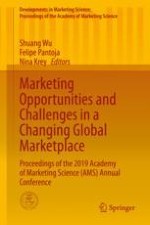2020 | OriginalPaper | Buchkapitel
Modelling for Mobile: Developing the mUTAUT Model: An Abstract
verfasst von : Hannah Marriott, Graeme McLean
Erschienen in: Marketing Opportunities and Challenges in a Changing Global Marketplace
Aktivieren Sie unsere intelligente Suche, um passende Fachinhalte oder Patente zu finden.
Wählen Sie Textabschnitte aus um mit Künstlicher Intelligenz passenden Patente zu finden. powered by
Markieren Sie Textabschnitte, um KI-gestützt weitere passende Inhalte zu finden. powered by
